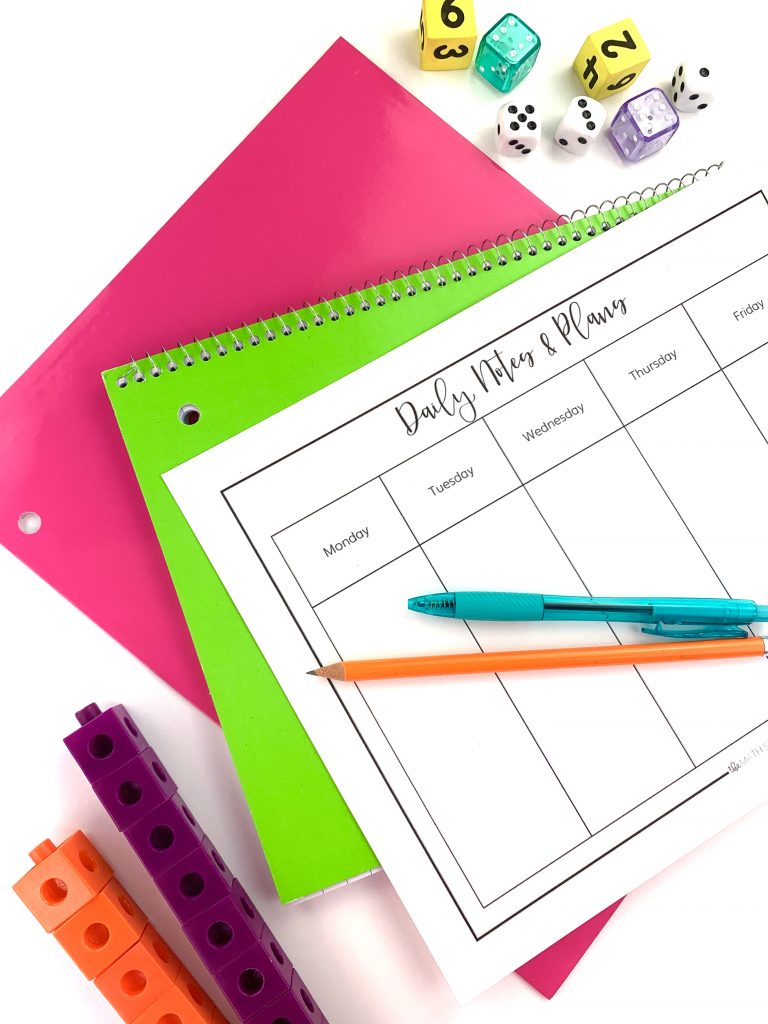
You know the importance of creating time for math intervention within your classroom, but you are already busy from the minute you step into the classroom until the moment the bell rings at the end of the day. How do you balance a lack of time with a math intervention schedule that works?
The good news is you don’t need to set aside an hour per day to make this work- try one of these solutions!
Rearrange Your Current Math Block
If your current math block is 1 hour long, what might it look like if you used 45 minutes for tier 1 instruction and then had a built-in 15-minute block for math intervention 4 days a week?
Maybe each day you start with whole group instruction and independent practice and then, in the last 15 minutes, your students complete independent work, do math center activities or play fluency games while you meet with a small group on exactly what they need.
Or perhaps Monday, Wednesday and Friday you take the first 20 minutes of instruction to meet with your most at risk students while the rest of the class completes a math challenge, completes a computer program or plays a math game at their seat.
You don’t need to spend the same amount of time each day with your math intervention groups but aim for a consistent amount of time and time in the day so that rather than completing a few activities “here and there” you have time to implement sequences of instruction with your most struggling students.
Look for Pockets of Time
Do you have 15 minutes between lunch and specials each day? What would it look like if your class had time for silent reading while you were able to pull a group to the side table?
You don’t need to pull the same group every single day- but aim for consistency in your math intervention schedule! Maybe Monday, Wednesday and Friday you pull four students with the greatest need. On Tuesday and Thursday you work with a group of 6 who are on the cusp of being at risk.
“Borrow” Time From Other Subjects to Create a Math Intervention Schedule
If you have students who are pulled for interventions, what do you regularly do within your classroom? What if this changed?
Maybe you have groups of students cycling out of the classroom while you run your guided reading groups. What would it look like if you took 15 minutes per day out of this time to work with a small math group? What if you took 20-30 minutes 2-3x per week?
Remember, early math ability is an indicator of future reading success! We put all of our time, focus and resources into reading intervention but what might your math intervention schedule look like if you were even the slightest bit more equitable with your greatest resource (time!)
Take a Close Look At Your Routines
Take a few minutes to sit down and look at your typical day. What items in your routine are absolute MUSTs- you couldn’t possibly make the progress and impact without these times. What items on your routine are “nice to have” maybe it’s something that you do daily that *could* be done 2 or 3 times a week instead.
Are there any “nice to have” items on your list that could be shortened in duration or decreased in frequency? Ask yourself, frankly, “Is this activity more important than supporting my most struggling math students in small groups?” The answer for many activities may be yes, but when you feel yourself hesitating there may be an opportunity for change!
Work With A Plan!
When you DO work with your small groups, make sure that the time is focused and that you are working with a plan! That way even when your math intervention schedule only allows for short 15 – 20 minute groups, you can still have a BIG impact on your students. I have a free planning guide that can help to get you started!




